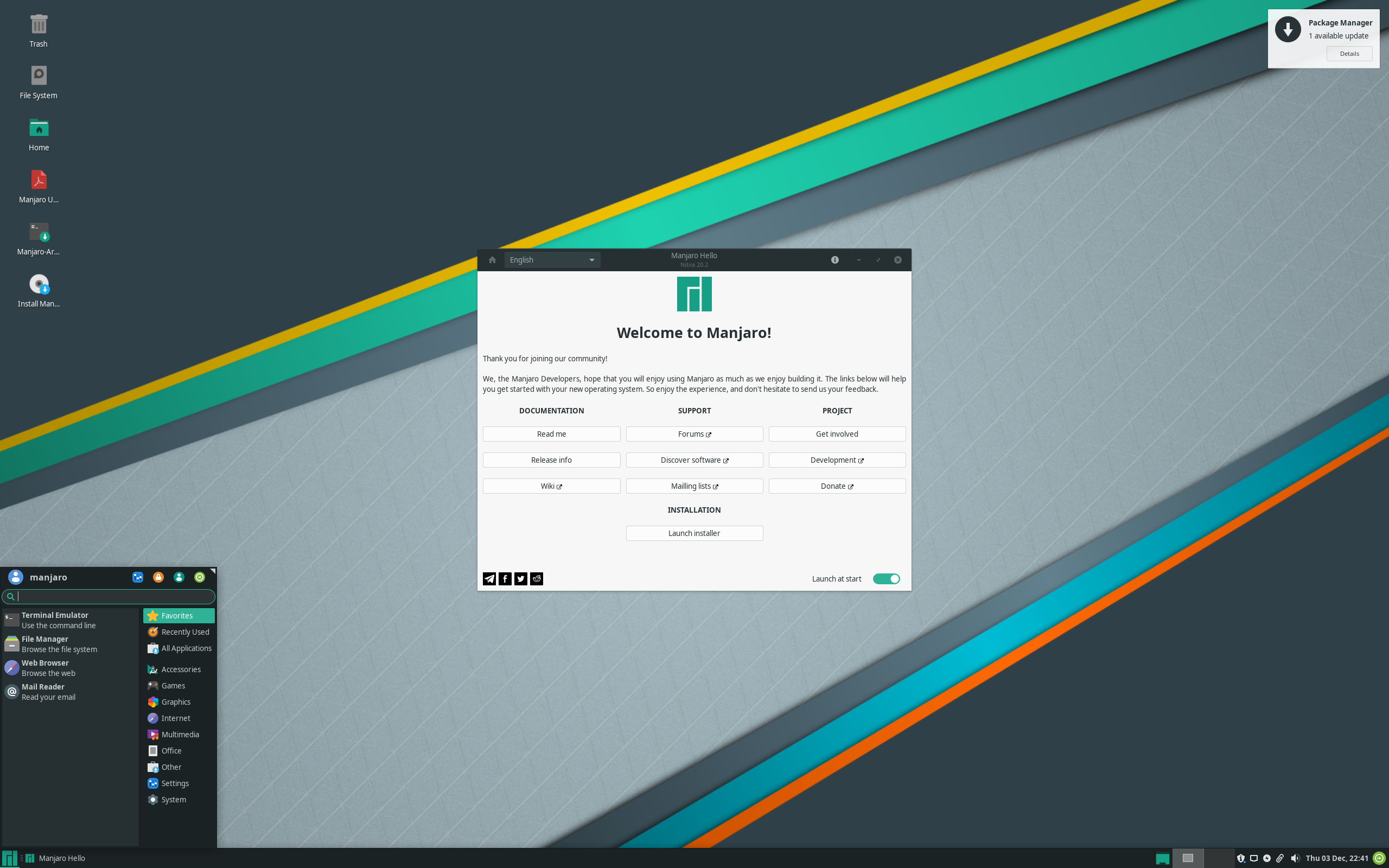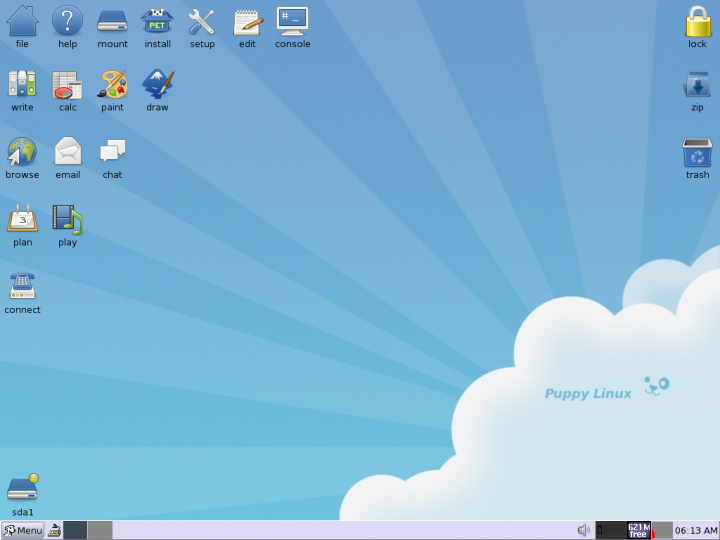|
Aufs
aufs (short for advanced multi-layered unification filesystem) implements a union mount for Linux file systems. The name originally stood for AnotherUnionFS until version 2. Developed by Junjiro Okajima in 2006, aufs is a complete rewrite of the earlier UnionFS. It aimed to improve reliability and performance, but also introduced some new concepts, like writable branch balancing, and other improvements – some of which are now implemented in the UnionFS 2.x branch. aufs was rejected for merging into mainline Linux. Its code was criticized for being "dense, unreadable, nduncommented". Instead, OverlayFS was merged in the Linux kernel. After several attempts to merge aufs into mainline kernel, the author has given up. Use Aufs is included in Debian "Jessie" (v8) and Ubuntu 16.04 out of the box. Debian "Stretch" (v9) does not include aufs anymore, but provides a package aufs-dkms, which auto-compiles the aufs kernel module using Dell's dkms. Docker originally used aufs for ... [...More Info...] [...Related Items...] OR: [Wikipedia] [Google] [Baidu] |
UnionFS
Unionfs is a filesystem service for Linux, FreeBSD and NetBSD which implements a union mount for other file systems. It allows files and directories of separate file systems, known as branches, to be transparently overlaid, forming a single coherent file system. Contents of directories which have the same path within the merged branches will be seen together in a single merged directory, within the new, virtual filesystem. When mounting branches, the priority of one branch over the other is specified. So when both branches contain a file with the same name, one gets priority over the other. The different branches may be either ''read-only'' or ''read/write'' file systems, so that writes to the virtual, merged copy are directed to a specific real file system. This allows a file system to appear as writable, but without actually allowing writes to change the file system, also known as copy-on-write. This may be desirable when the media is physically read-only, such as in the case o ... [...More Info...] [...Related Items...] OR: [Wikipedia] [Google] [Baidu] |
Union Mount
In computer operating systems, union mounting is a way of combining multiple directories into one that appears to contain their combined contents. Union mounting is supported in Linux, BSD and several of its successors, and Plan 9, with similar but subtly different behavior. As an example application of union mounting, consider the need to update the information contained on a CD-ROM or DVD. While a CD-ROM is not writable, one can overlay the CD's mount point with a writable directory in a union mount. Then, updating files in the union directory will cause them to end up in the writable directory, giving the illusion that the CD-ROM's contents have been updated. Implementations Plan 9 In the Plan 9 operating system from Bell Labs (mid-1980s onward), union mounting is a central concept, replacing several older Unix conventions with union directories; for example, several directories containing executables, unioned together at a single directory, replace the variable for c ... [...More Info...] [...Related Items...] OR: [Wikipedia] [Google] [Baidu] |
Union Mount
In computer operating systems, union mounting is a way of combining multiple directories into one that appears to contain their combined contents. Union mounting is supported in Linux, BSD and several of its successors, and Plan 9, with similar but subtly different behavior. As an example application of union mounting, consider the need to update the information contained on a CD-ROM or DVD. While a CD-ROM is not writable, one can overlay the CD's mount point with a writable directory in a union mount. Then, updating files in the union directory will cause them to end up in the writable directory, giving the illusion that the CD-ROM's contents have been updated. Implementations Plan 9 In the Plan 9 operating system from Bell Labs (mid-1980s onward), union mounting is a central concept, replacing several older Unix conventions with union directories; for example, several directories containing executables, unioned together at a single directory, replace the variable for c ... [...More Info...] [...Related Items...] OR: [Wikipedia] [Google] [Baidu] |
Slax
Slax is a LiveCD Linux distribution developed by Tomáš Matějíček and based on upstream customizable Linux distributions. Packages can be added by apt package manager or can be prepared as modules. The tagline for Slax refers to itself as "your pocket Operating System, operating system". Features One of the main benefits of the Slax distribution is its ease of customization. Additional software can be added and removed, using Slax modules. A traditional package management system, package manager such as Debian's Advanced Packaging Tool, APT is not required to load additional software; Slax modules are completely self-contained. However, APT is fully supported. Users can also modify the default CD image or USB drive installation to customize the packages available in the distribution on boot. Slax also allows Debian packages to be converted into Slax modules. Slax modules are compressed read-only SquashFS file system images that are compressed with a Lempel–Ziv–Markov ... [...More Info...] [...Related Items...] OR: [Wikipedia] [Google] [Baidu] |
NimbleX
NimbleX is a small Slackware-based Linux distribution optimized to run from a CD, USB drive or a network environment. NimbleX has been praised for how fast it boots, as well as for its small disk footprint, which is considered surprising for a distribution using KDE as desktop environment. NimbleX was also remarked for its web site that allows users to generate custom bootable images using just a web browser. It was also covered in mainstream Romanian press as the first Linux distribution put together by a Romanian. Expres, August 28, 2007 Features NimbleX is reported to boot fast; an important factor in user experience when running from optical media or ...[...More Info...] [...Related Items...] OR: [Wikipedia] [Google] [Baidu] |
Free Special-purpose File Systems
Free may refer to: Concept * Freedom, having the ability to do something, without having to obey anyone/anything * Freethought, a position that beliefs should be formed only on the basis of logic, reason, and empiricism * Emancipate, to procure political rights, as for a disenfranchised group * Free will, control exercised by rational agents over their actions and decisions * Free of charge, also known as gratis. See Gratis vs libre. Computing * Free (programming), a function that releases dynamically allocated memory for reuse * Free format, a file format which can be used without restrictions * Free software, software usable and distributable with few restrictions and no payment * Freeware, a broader class of software available at no cost Mathematics * Free object ** Free abelian group ** Free algebra ** Free group ** Free module ** Free semigroup * Free variable People * Free (surname) * Free (rapper) (born 1968), or Free Marie, American rapper and media personality ... [...More Info...] [...Related Items...] OR: [Wikipedia] [Google] [Baidu] |
File System
In computing, file system or filesystem (often abbreviated to fs) is a method and data structure that the operating system uses to control how data is stored and retrieved. Without a file system, data placed in a storage medium would be one large body of data with no way to tell where one piece of data stopped and the next began, or where any piece of data was located when it was time to retrieve it. By separating the data into pieces and giving each piece a name, the data are easily isolated and identified. Taking its name from the way a paper-based data management system is named, each group of data is called a " file". The structure and logic rules used to manage the groups of data and their names is called a "file system." There are many kinds of file systems, each with unique structure and logic, properties of speed, flexibility, security, size and more. Some file systems have been designed to be used for specific applications. For example, the ISO 9660 file system is desig ... [...More Info...] [...Related Items...] OR: [Wikipedia] [Google] [Baidu] |
Manjaro Linux
Manjaro ( ) is a free and open-source Linux distribution based on the Arch Linux operating system that has a focus on user-friendliness and accessibility. It uses a rolling release update model and Pacman as its package manager. It is developed mainly in Austria, France and Germany. History Manjaro was first released on July 10, 2011. By mid 2013, Manjaro was in the beta stage, though key elements of the final system had all been implemented such as: a GUI installer (then an Antergos installer fork); a package manager (Pacman) with its choice of frontends; Pamac (GTK) for Xfce desktop and Octopi ( Qt) for its Openbox edition; MHWD (Manjaro Hardware Detection, for detection of free & proprietary video drivers); and Manjaro Settings Manager (for system-wide settings, user management, and graphics driver installation and management). GNOME Shell support was dropped with the release of version 0.8.3 in 2012. However, efforts within Arch Linux made it possible to restart the Ci ... [...More Info...] [...Related Items...] OR: [Wikipedia] [Google] [Baidu] |
Puppy Linux
Puppy Linux is an operating system and family of light-weight Linux distributions that focus on ease of use and minimal memory footprint. The entire system can be run from random-access memory (RAM) with current versions generally taking up about 600 MB (64-bit), 300 MB (32-bit), allowing the boot medium to be removed after the operating system has started. Applications such as AbiWord, Gnumeric and MPlayer are included, along with a choice of lightweight web browsers and a utility for downloading other packages. The distribution was originally developed by Barry Kauler and other members of the community, until Kauler retired in 2013. The tool Woof can build a Puppy Linux distribution from the binary packages of other Linux distributions. History Barry Kauler started Puppy Linux in response to a trend of other distributions becoming stricter on system requirements over time. His own distribution, with an emphasis on speed and efficiency and being lightweight, started from ... [...More Info...] [...Related Items...] OR: [Wikipedia] [Google] [Baidu] |
Salix OS
Salix OS is a multi-purpose Linux distribution based on Slackware. Goals Salix OS retains full backwards compatibility with Slackware. This enables Slackware users to benefit from Salix repositories, which they can use as an "extra" source of software for their distribution. However, while in the KISS principle that Slackware adheres to, "Simple" refers to the system design, Salix OS applies it to daily use as well. It aims to be simple, fast and easy to use. To paraphrase the words of a journalist: the target audience for Salix OS might well be described as "lazy Slackers", users familiar with Linux in general and Slackware in particular who do not mind having additional tools to reduce their workload, while maintaining the maximum compatibility with Slackware possible. Salix OS adds automated dependency resolution, enhanced internationalization and localization, a larger repository of applications, and a well equipped suite of native administration and configuration ... [...More Info...] [...Related Items...] OR: [Wikipedia] [Google] [Baidu] |



